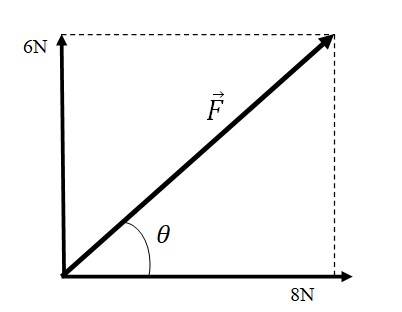Laws of Motion
Get insights from 108 questions on Laws of Motion, answered by students, alumni, and experts. You may also ask and answer any question you like about Laws of Motion
Follow Ask QuestionQuestions
Discussions
Active Users
Followers
New answer posted
4 months agoContributor-Level 10
Given, the mass of the body = 0.4 kg, Initial speed = 10m/s, Initial force, Retarding force, F = - 8 N
(a) At t = -5s, Due to constant speed, the acceleration of the body = 0
From the relation, s = ut + (1/2)at2, we get
s = 10 + 0 = -50 m
At t = 25s, The acceleration of the body due to retarding force, from the relation F = ma, a = -8/0.4 m/s2 = - 20 m/s2
From the relation, s = ut + at2, , we get
s = 10 + = -6000m
At t = 100s
For the first 30 s, while the body moves towards North, the opposite force of 8 N acts on it and from the relation s = ut + (1/2)at2, , we get
S30 = 10 30 +&nb
New answer posted
4 months agoContributor-Level 10
The mass of the rocket, m = 20000 kg
When the rocket is fired, gravitational acceleration tries to pull it down. Hence the effective acceleration on the rocket = rocket acceleration + gravitational acceleration
The acceleration, a = 5 m/s2 , gravitational acceleration = 10 m/s2
Total acceleration = 5 +10 = 15 m/s2
Thrust force = 20000 15 N = 3 .0 N
New answer posted
4 months agoContributor-Level 10
The initial speed of 3 wheeler, u = 36 km/h = 10 m/s
The final velocity of the 3 wheeler, v = 0
The time t = 4 s
From the relation, v = u-at, we get, a = u/t = 10/4 m/s2 = 2.5 m/s2
The total mass acting on the 3 wheeler, m = mass of the 3 wheeler + mass of the driver = 400 +65 kg = 465 kg
The average retarding force F is given by F = MA = 465 2.5 N = 1162.5 N = 1.2 N
New answer posted
4 months agoContributor-Level 10

The resultant force F of the two forces 6N and 8N is given by,
F = = 10 N
Acceleration is given by F = ma, a = F/m = 10/5 m/s2 = 2 m/s2
= 6/8, = 36.86
New answer posted
4 months agoContributor-Level 10
Initial speed, u = 2.0 m/s, the final speed v = 3.5 m/s, the time t = 25 s
From the relation v = u + at, we get acceleration a = (v-u)/t = (3.5 – 2.0 )/ 25s = 0.06 m/s2
The force F = ma, F = 3 0.06 N = 0.18 N
New answer posted
4 months agoContributor-Level 10
The retarding force, F = 50N, the mass m = 20 kg
From the equation F = ma, we get acceleration a = 50 / 20 m/s2 = 2.5 m/s2
The initial speed, u = 15 m/s, the final speed v =0, from the relation v = u-at, we get
T = u/a = 15/2.5 s = 6s
New question posted
4 months agoNew answer posted
4 months agoContributor-Level 10
(a) Mass of the stone, m = 0.1 kg, Acceleration due to gravity = 10 m/s2
Net force = 0.1 10 N = 1.0 N. The direction of force is downwards
(b) Since the train is moving at a constant velocity, the acceleration imparted by the train is zero. Only acceleration acting on the stone is gravity. So the force will be 1.0 N, acting downwards
(c) The acceleration of the train = 1 m/s2 so the force exerted by the train = 0.1 1 N = 0.1 N and it is acting in the horizontal direction. But when the stone is dropped, the force started acting on the stone is only due to gravity, the train moving force has no effect. So the net
New answer posted
4 months agoContributor-Level 10
(a) During the upward motion f the pebble, the acceleration due to gravity acts downwards. The magnitude of the force is
F = MA = 0.05 kg 10 m/s2 = 0.5 N and the direction of force is downwards.
(b) During its downward motion – the force is 0.5 N and the direction is downwards.
(c) When the pebble is thrown at an angle of 45 with the horizontal direction, it will have both horizontal component of force and vertical component of force during its upward journey, When it reaches the maximum height, the vertical component of velocity will becomes zero and the force acting will be 0.5 N and acting downwards.
New answer posted
4 months agoContributor-Level 10
(a) Since the raindrop is falling at a constant speed, the acceleration is zero. When the acceleration is 0, the force acting on the drop will also become zero ( since F = ma)
(b) Since the cork is floating on water, the weight of the cork is balanced by upward force of water. So the net force on the cork is 0
(c) Since the kite is held stationary in the sky, the net force is 0
(d) Since the car is moving at a constant velocity, the acceleration is 0, hence the net force is also 0
(e) The net force acting on the high-speed electron will be zero since the electron is far from the material objects and free of electric and magnetic field
Taking an Exam? Selecting a College?
Get authentic answers from experts, students and alumni that you won't find anywhere else
Sign Up on ShikshaOn Shiksha, get access to
- 65k Colleges
- 1.2k Exams
- 687k Reviews
- 1800k Answers
